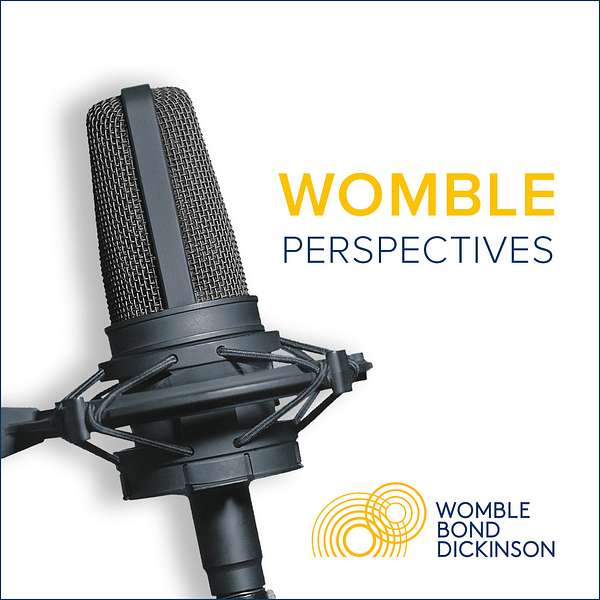
Womble Perspectives
Welcome to Womble Perspectives, where we explore a wide range of topics from the latest legal updates to industry trends to the business of law. Our team of lawyers, professionals and occasional outside guests will take you through the most pressing issues facing businesses today and provide practical and actionable advice to help you navigate the ever-changing legal landscape. With a focus on innovation, collaboration and client service, we are committed to delivering exceptional value to our clients and to the communities we serve.
Womble Perspectives
Navigating IP in the Circular Economy
As companies around the world embrace the circular economy, the traditional “take-make-dispose” model is being replaced by a more sustainable approach—one that values longevity, repairability, and recycling. But with this shift comes a critical legal question: when does a repair become a reconstruction? And how can businesses protect their IP while supporting sustainability?
Read the full article: Building a Sustainable Future: Understanding Permissible Repair Vs Impermissible Reconstruction In Support Of A Circular Economy
About the authors
Welcome to Womble Perspectives, where we explore a wide range of topics, from the latest legal updates to industry trends to the business of law. Our team of lawyers, professionals and occasional outside guests will take you through the most pressing issues facing businesses today and provide practical and actionable advice to help you navigate the ever changing legal landscape.
With a focus on innovation, collaboration and client service. We are committed to delivering exceptional value to our clients and to the communities we serve. And now our latest episode.
In today’s episode of Womble Perspectives, we’re diving into a topic that sits at the intersection of environmental responsibility and intellectual property law: the right to repair.
As companies around the world embrace the circular economy, the traditional “take-make-dispose” model is being replaced by a more sustainable approach—one that values longevity, repairability, and recycling. But with this shift comes a critical legal question: when does a repair become a reconstruction? And how can businesses protect their IP while supporting sustainability?
Let’s break it down.
The circular economy encourages us to rethink how we design, use, and dispose of products. It’s about creating value throughout a product’s entire lifecycle. For businesses, this means designing products that last longer and can be repaired—ideally, without infringing on intellectual property rights.
Companies that strike the right balance between protecting their IP and enabling repair not only reduce waste but also build customer trust, strengthen supply chains, and support local repair economies.
In the United States, the doctrine of patent exhaustion is key. Once a patented product is sold, the IP holder’s rights over that specific item are considered exhausted. That means the buyer can use, repair, or resell it without infringing the patent.
The Supreme Court reaffirmed this in Impression Products v. Lexmark International, and again in 2023. But here’s the catch: while repair is allowed, reconstruction is not.
So what’s the difference?
Permissible repair involves replacing individual, unpatented parts to keep the product working. Think of swapping out a spark plug in a car. That’s repair.
Impermissible reconstruction, on the other hand, means creating a new version of the product—like replacing everything in the car except the spark plug. That crosses the line into infringement.
Courts look at several factors to make this distinction: how much of the product is replaced, whether the parts are patented, and the intent behind the replacement.
In 2023, Apple made headlines by supporting federal right-to-repair legislation, committing to provide tools and parts to consumers nationwide.
Meanwhile, the Federal Trade Commission has stepped up enforcement against restrictive repair practices, targeting violations under the Magnuson-Moss Warranty Act and the FTC Act.
And at the state level? All 50 states have introduced right-to-repair bills. States like New York, Minnesota, and Oregon have already passed laws requiring manufacturers to provide access to parts, manuals, and diagnostic tools. Oregon’s 2024 law even bans software that blocks third-party repairs—a major step forward.
Across the Atlantic, the European Union also recognizes the principle of IP exhaustion. Once a product is sold, consumers can use and repair it. But, like in the U.S., the line between repair and reconstruction isn’t always clear.
The UK’s Supreme Court, in Schütz v. Werit, laid out several factors to help distinguish the two. These include the nature and lifespan of the replaced part, how easy it is to replace, and whether the part embodies the inventive concept of the patent.
In 2024, the EU adopted a new directive—Directive 2024/1799—requiring manufacturers to repair certain products like smartphones and washing machines within a reasonable time and at a fair price. It also bans practices that hinder repair and mandates transparency around repair services and spare parts.
So, what does this all mean for businesses?
Understanding the legal boundaries between repair and reconstruction is essential. Companies that get it right can protect their IP, support sustainability, and tap into growing consumer demand for repairable products.
As the legal landscape evolves, one thing is clear: the right to repair isn’t just a consumer issue—it’s a business opportunity.
Thanks for joining us on Womble Perspectives. If you found this episode helpful, be sure to subscribe and share it with your network.
Thank you for listening to Womble Perspectives. If you want to learn more about the topics discussed in this episode, please visit The Show Notes, where you can find links to related resources mentioned today. The Show Notes also have more information about our attorneys who provided today's insights, including ways to reach out to them.
Don't forget to subscribe via your podcast player of choice so that you never miss an episode. Thank you again for listening.